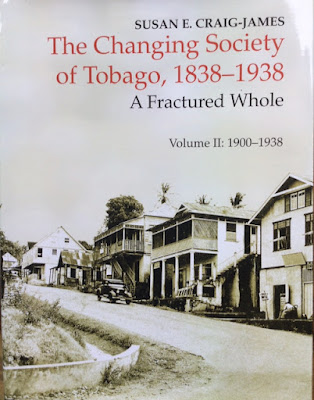Tobago in the Caribbean and the World

Pat Ganase is studying Dr Susan E Craig-James’ history of Tobago; and learning more about what makes Tobago so special. Like many Tobagonians, Susan Craig went to high school in Trinidad, performing to bring credit to their families and providing markers of excellence for the whole nation. I am proud to say that Susan was Head Girl at Bishop Anstey High School when I was in fifth form. She was a role model and leader. I was not surprised to be able to acquire her history, The Changing Society of Tobago, 1838-1939 some 40+ years after BAHS. This two-volume work compiled by (now) Dr Susan E. Craig-James, was published in 2008 by the press which she founded in 1998, Cornerstone Press Limited. It is a work of art. All the values across the publishing process: research, writing, editing, layout and design and printing have been observed to the highest degree. It includes an index, extensive notes, old maps and several photographs. Here is a book that should be a watershed not onl...


